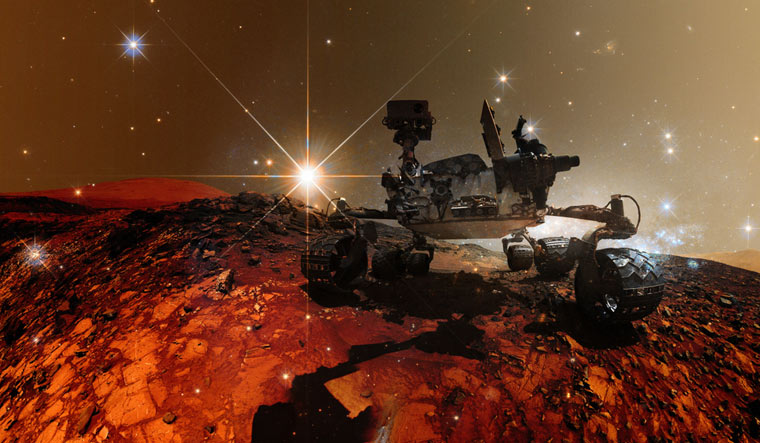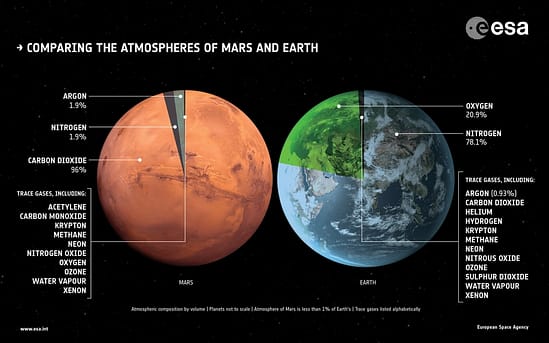The possibilities of life on Mars
Since ancient times, people have gazed up at the sky with wonder, hoping to discover other planets like our own that may host life. Despite the desolate nature of the Moon, humans still hold hope for the possibility of extraterrestrial life within our very own Solar System.
Undoubtedly, one of the most captivating candidates for extraterrestrial life is Mars. This planet, which is smaller, colder, and farther from the sun than Earth, has a compelling history of flowing liquid water on its surface for over a billion years. Its proximity to Earth and similarities to our planet make the possibility of life on Mars a prominent topic in astrobiology.

However, despite extensive research, no conclusive evidence of past or present life on Mars has been found. While studies suggest that Mars may have been habitable for microorganisms during its ancient Noachian era due to the presence of liquid water, the mere existence of habitable conditions does not guarantee the existence of life.
1. Presence of Organic Compounds-
Recent discoveries on Mars, such as the presence of organic compounds and boron in sedimentary rocks, suggest the possibility of prebiotic chemistry and support the idea of early habitability in Gale Crater. However, the surface of Mars is currently exposed to harsh ionizing radiation and contains perchlorates that are toxic to microorganisms, leading researchers to believe that any potential life on Mars would be found in the subsurface.
The Curiosity, Perseverance, and Opportunity rovers are searching for evidence of past life on Mars, including ancient water and biospheres. Organic compounds and boron have been found inside sedimentary rocks, supporting the possibility of early habitability. Methane has been detected on Mars, which could be produced by microorganisms or geological means.

The European ExoMars Trace Gas Orbiter and the NASA Mars 2020 rover Perseverance are investigating the source of methane. In 1976, the Viking landers performed three biology experiments that yielded ambiguous results. In 1984, a Martian meteorite was discovered that could contain remnants of fossilized organic life forms. Curiosity detected seasonal “burps” of methane, which could result from both inorganic and organic processes. The consensus is that life if it exists, is best preserved in the subsurface away from harsh surface conditions.
2. Mars’s atmosphere

The habitability potential of environments on Mars is shaped by various chemical, physical, geological, and geographic attributes. However, isolated measurements of these factors may not be enough to determine habitability. Instead, combining multiple measurements can help predict locations with greater or lesser habitability potential. Current ecological approaches use 19 or 20 environmental factors, with an emphasis on factors such as water availability, temperature, presence of nutrients, energy source, and protection from radiation.
3. Liquid water
The early Mars atmosphere was dense with CO2, but colder than Earth due to the loss of its magnetic field, resulting in the degradation of habitability over time. However, impacts and volcanism could have caused transient warming, leading to the formation of water networks. Alga crater may contain ancient biosignatures, preserved by impact glass. The Curiosity rover found evidence of key chemical ingredients for life in the soil, suggesting a past aqueous environment. The detection of organic molecules in sedimentary rocks dating back three billion years suggests the presence of building blocks for life on Mars. Despite this evidence, the loss of the Martian atmosphere and subsequent changes to the environment could have resulted in the extinction of all life on Mars. Further exploration and study of Mars could potentially reveal evidence of ancient life or validate scenarios for habitability.
4. Meteorites
There are currently 224 known Martian meteorites that provide physical samples of Mars to Earth-bound laboratories. Some researchers have suggested that microscopic morphological features found in ALH84001 are biomorphs, but this interpretation is highly controversial and not supported by most researchers. Seven criteria have been established to recognize past life within terrestrial geologic samples, but none of the Martian samples have met all seven criteria, making it difficult to prove the existence of past life on Mars.
5. Ichnofossil-like structures
On Earth, the interactions between organisms and their substrates are important indicators of biological activity, such as fossilized products of life-substrate interactions. Similar structures have been found on Mars, including stick-like structures in sedimentary rocks in Gale Crater and micro tunnels in Martian meteorites. These structures are potential ichnofossils, but cannot yet be confirmed as biogenic in origin, as abiotic processes could also produce them. Further research is needed to confirm whether these structures are evidence of past biological activity on Mars.
6. Viking lander biological experiments
The Viking program in the 1970s placed two landers on Mars to search for signs of microbial life, but only the ‘Labeled Release’ experiment gave a positive result for metabolism. The overall results were declared inconclusive, and subsequent Mars lander missions have not found meaningful traces of biomolecules or biosignatures. Claims of extant microbial life on Mars are based on old data from the Viking landers, which have been reinterpreted by some researchers. A study in 2010 showed that organic compounds “could have been present” in the soil analyzed by both Viking landers, but the presence of perchlorate in the soil may have destroyed any Martian organics, leaving the question of whether or not Viking found organic compounds still open. The Labeled Release evidence was not initially accepted by the scientific community, and there is still no consensus.
In summary, the question of whether or not there is or has been microbial life on Mars remains unanswered. Various studies, experiments, and observations have been conducted over the years, but none have produced conclusive evidence of past or present life on the planet. Some researchers have claimed to have found evidence of life or potential biosignatures, such as meteorites with potential biomarkers, fossilized products of life-substrate interactions, and the detection of formaldehyde in the atmosphere. However, many of these claims have been controversial, and there is no scientific consensus on whether they provide definitive proof of life. Other studies have suggested non-biological explanations for these phenomena, such as abiotic chemical reactions. While the search for life on Mars continues, more research and exploration are needed to answer this fundamental question.


